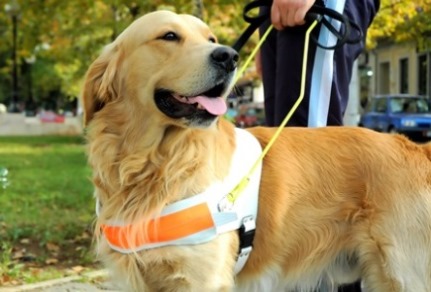Therapy Dog Training: A Beginner’s Guide
Posted by Hot Dog Collars on 11/16/17 5:15 PM
 Dogs are truly a gift to this world. Whatever the day you’ve had or the mood you’re in, your pup seems to instinctively know how to make everything better. When they greet you at the door with high levels of excitement and playfulness (whether you’ve been gone for 15 minutes or a week) you know that you are loved.
Dogs are truly a gift to this world. Whatever the day you’ve had or the mood you’re in, your pup seems to instinctively know how to make everything better. When they greet you at the door with high levels of excitement and playfulness (whether you’ve been gone for 15 minutes or a week) you know that you are loved.
Not everyone is fortunate enough to know the love of a dog. Circumstances greatly influence canine-human interactions, and for some people, the idea of a dog as being one of the family is a baffling notion. Doesn’t this just make you feel sad? People should know how phenomenal dogs are. Dogs possess a level of compassion that even some people don’t have an ounce of.
Is your pupper obedient, well-behaved and a little cuddle bug? Do they do well with grabby children? Do they refrain from jumping up on your senior family members? If so, your dog might be the perfect candidate for therapy canine work. With a little training using treats, specialty dog collars (like the Martingale dog collar) and other positive reinforcements, your dog could be a small child’s new reading buddy or a senior citizen’s resident best friend.
Assessing Your Pup’s Personality
Before you begin training, you’ll need to assess your doggo’s temperament to make sure they are up to the task. Your dog might be the sweetest, kindest, quietest little thing you’ve ever known, but circumstances can change a dog’s behavior. If your dog has a tough time concentrating and is easily distracted, therapy work might not be what is best suited to their personality.
 Paw Rescue writes that “temperament testing evaluates an individual dog’s temperament through a series of tests that measure traits including stability, confidence, shyness, friendliness, aggressiveness, protectiveness, prey instincts, play drive and self-defense instincts, and ability to distinguish between threatening and nonthreatening situations.”
Paw Rescue writes that “temperament testing evaluates an individual dog’s temperament through a series of tests that measure traits including stability, confidence, shyness, friendliness, aggressiveness, protectiveness, prey instincts, play drive and self-defense instincts, and ability to distinguish between threatening and nonthreatening situations.”
Remember, just because your dog might not be cut out for therapy work, that doesn’t mean they’ve failed; they simply have strengths in other areas!
Time for Training
Knowing basic commands won’t be enough for your dog to be able to perform in their therapy role well. According to Daily Treat, international dog therapy training standards require a minimum of 120 hours of training over a six-month time period.
There are three training phrases to undertake. These phases are:
 Tasking: Tasking is just what it sounds; it has to do with training your dog in skills they will need to perform their job. As an example, if they sense that a child is feeling anxious, they’ll know to place their chin on the child’s knee to relax said child.
Tasking: Tasking is just what it sounds; it has to do with training your dog in skills they will need to perform their job. As an example, if they sense that a child is feeling anxious, they’ll know to place their chin on the child’s knee to relax said child.
Heeling: Heeling training has to do with how the dog knows to respond to their handler’s movements. As an example, if the handler raises their hand palm up, the dog knows to stay seated.
Proofing: Said to be the “most time-consuming” during training, proofing is training that has to do with helping your dog learn how to tune out distractions on the job. As an example, if the pup should see another dog, they know better than to try and greet and play with the other dog.
After assessing your dog’s personality and working them every day, it’s time to begin therapy! Make sure your pup has the accessories they need to do the job. Visit Hot Dog Collars for collars, leashes, treats and more!

